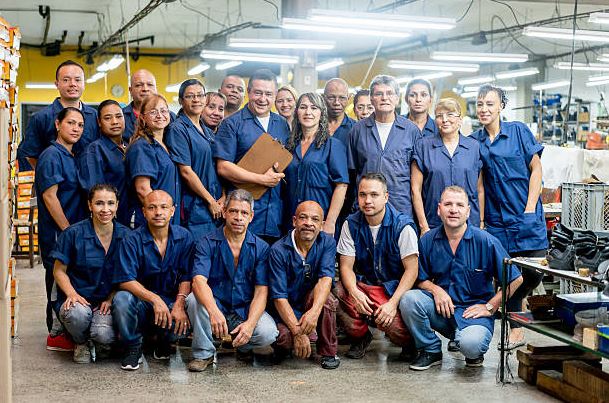10 Health and Safety Myths – #3 Zero Harm – Stop Taking it Literally!
 I’m self-employed. So I can’t lose my job just for saying I don’t “believe in” Zero Harm. But others have lost their careers, apparently, so listen carefully to your Uncle Simon: If you happen to work in, or have applied for a safety role in an organisation that espouses Zero Harm, tread carefully. Test the water for zealots. Try expressing cautious doubts about Zero Harm and watch what happens. If your thoughts and words are censored, marginalised or otherwise silenced, you are probably committing a cardinal sin and may suffer eternal damnation. I use religious terminology deliberately because a certain amount of fervour is required in the Church of Zero Harm. So thinking unclean thoughts, let alone verbalising them, can, and has, resulted in excommunication.
I’m self-employed. So I can’t lose my job just for saying I don’t “believe in” Zero Harm. But others have lost their careers, apparently, so listen carefully to your Uncle Simon: If you happen to work in, or have applied for a safety role in an organisation that espouses Zero Harm, tread carefully. Test the water for zealots. Try expressing cautious doubts about Zero Harm and watch what happens. If your thoughts and words are censored, marginalised or otherwise silenced, you are probably committing a cardinal sin and may suffer eternal damnation. I use religious terminology deliberately because a certain amount of fervour is required in the Church of Zero Harm. So thinking unclean thoughts, let alone verbalising them, can, and has, resulted in excommunication.
Zero Harm/Zero defects
I’ve also been lucky enough to have been exposed to “Zero Defects” thinking in Quality Management over the years, such as Philip Crosby training and Kaizen training, including some neat projects that really opened my mind. That’s why I never took Zero Harm all that literally. If you boil it all down, Zero Defects was (is) all about taking personal responsibility for your part of the job – not passing on junk to the next person; the well-documented “Toyota Way” that saw the whole production line stop to immediately fix the cause of non-conformances.
So I saw Zero Harm much the same way – as a mindset in every individual that says “there is no justification for taking a risk or passing one on to someone else”. To me, Zero Harm was always an analogy for revealing a desirable ethic. Perhaps most of us do too? But wait a minute..
Zero Harm Zealots
 One day in some LinkedIn group, I found myself up against The Zealots. I didn’t see it coming. But there’s a large minority of safety people who “live” this. What I see as a symbolic concept, they see not only as something insightful, but also as a perfect and realistic goal. There was something kind of fishy going on too. They weren’t just dispassionately debating. They were behaving quite unpleasantly and confrontationally. Yes, they were offended! It was very much what I imagine it would be like after making a non-religious comment at a fundamentalist prayer meeting. So that was the clue and also the cue. I exited stage left. But with objectivity intact.
One day in some LinkedIn group, I found myself up against The Zealots. I didn’t see it coming. But there’s a large minority of safety people who “live” this. What I see as a symbolic concept, they see not only as something insightful, but also as a perfect and realistic goal. There was something kind of fishy going on too. They weren’t just dispassionately debating. They were behaving quite unpleasantly and confrontationally. Yes, they were offended! It was very much what I imagine it would be like after making a non-religious comment at a fundamentalist prayer meeting. So that was the clue and also the cue. I exited stage left. But with objectivity intact.
Why Zero Harm?
We have all heard the rather virtuous argument that if we don’t aim for zero, we are somehow condoning a level above zero. And when it’s about harm to people, well, that makes us some kind of pariah, doesn’t it? But that argument is what’s known as a non sequitur – the conclusion doesn’t logically follow the statement. If I’m against capital punishment for murder, it doesn’t mean I’m for the crime of murder. That type of thinking is what Dr Rob Long, an Australian expert in social psychology, has labelled “binary thinking”. Here are two insightful quotes from him:
- “At the foundation of Zero Harm ideology is the delusion of binary thinking”.
- “Zero goal setting, zero language and zero ideology is simplistic and therefore unrealistic and unsafe”.
Rob posts some great stuff and has published a number of books. This link will take you to an article called The Ideology of Zero Harm. In it, there are several links to more of his work.
Silliness
I’m not alone then, in feeling a deep suspicion about Zero Harm. So, before going on, I feel justified in asking a few mischievously naïve questions to illustrate how silly it really is.
 How long do you have to have a period of no harm before you’ve officially achieved – y’know – “Zero Harm”?
How long do you have to have a period of no harm before you’ve officially achieved – y’know – “Zero Harm”?- And is the period of time required the same for Jim Ruka Drainlayers as it is for Exxon? For me, it’s not about a timeframe, and it shouldn’t be, but some people are “true believers” and they see it as a real goal. See, Jim Ruka’s not big on Zero Harm, but he and his offsider know a thing or two about drain laying and it’s been 8 years since Jim had a day off work. And that was Man Flu.
- Waaait a minute, all organisations have Zero Harm, don’t they? Just can’t seem to tell how long it’s going to be each time. Hey, look, we’ve got a Zero Harm thing! Ah nah, sorry, it’s gone again.
- Let’s say it’s a 12 month target. And let’s stretch credibility and say you got there. Then some nasty harm happens the very next day. Did you still achieve Zero Harm? Think carefully about this. It’s nonsense isn’t it?
- And now for the reset. “Whoa, that was a slip-up, let’s start again”. Bit like a recovering alcoholic isn’t it? What happens to that non-number Zero when this cycle has been repeated a few times over?
- Finally, a quote by Dave Collins, one of my LinkedIn contacts. This cracks me up: “Would you get on a plane that had “ZERO CRASH” emblazoned all over it? (Dave is an Aussie safety guy). I find this mischievously funny.
What are the problems with Zero Harm?
Despite the bit of mischief above, those are not actually my main problems with Zero Harm. Those are just a few digs at the silliness of it. My problem is that I don’t see it making sense to anyone UNLESS we simply treat it as a nice guiding work ethic. A voice in our heads. In which case we should stop talking about it as if it can exist in any real sense of the word!
We should also think carefully about the message it sends (or fails to send) to the people who are exposed to the highest risk hazards. The Zero Harm monicker is, I believe, not only meaningless to workers, but probably a bit stinky. It reminds me of the exhortation posters we used to see (still see?) in workplaces. There are various examples, but this one is pretty much the most dire of them all: “Think Quality. Remember, the Next Inspector is the Customer” . Aaagh!
Apart from the abandonment of direct responsibility for quality assurance, this is an empty exhortation that almost literally emanates anonymously from the sky. It’s also what these days is called “passive-aggressive”. But worse than that, it passes the quality ball on to the everyday worker without providing tools, leadership, meaning or resources. How anyone could have worked for even one day with that cringeworthy gesture above their heads is a miracle in itself.
I used to post diatribes from an imaginary Health and Safety Manager called Murray Hurry. It was irony, to illustrate crappy attitudes by managers. Here’s what he had to say about Zero Harm as long ago as March 2013. (Not recommended if you are a keen Zero Harm apostle).
Some suggestions
 Just to be clear: I’m not biased in favour of workers or against management. My politics are a little right of centre, if anything. But I respect people, and I don’t think we listen enough to workers. We all “know what’s best” and we are all good at creating so-called solutions. But everyone we meet has a set of unique strengths, weaknesses, attitudes, beliefs and ways of being. Safety is mostly about behaviour. Yet we cannot make the shift in safety to people-centric instead of process-centric.
Just to be clear: I’m not biased in favour of workers or against management. My politics are a little right of centre, if anything. But I respect people, and I don’t think we listen enough to workers. We all “know what’s best” and we are all good at creating so-called solutions. But everyone we meet has a set of unique strengths, weaknesses, attitudes, beliefs and ways of being. Safety is mostly about behaviour. Yet we cannot make the shift in safety to people-centric instead of process-centric.
All people have slightly different ways of learning, contributing and behaving. They all look at the nonsense like “Join the Journey to Zero Harm”, and privately stick two fingers up at the bosses. Actually, not just that. They just aren’t engaged with it. Because all the symbolic posturing in the world makes no difference unless some things actually happen that are meaningful to them. That get their attention. Like removing obstacles. Having their say, being listened to and having their concerns acted upon. Seeing that management get behind them and take it seriously too.
Why the heck do we need to have safety “campaigns” anyway? Why do we keep branding “new” ideas? Every time we give some new effort a name, we give it the kiss of death. The timer starts running down. We obviously didn’t know what we were doing before because we now have a new way. And a new slogan. So let’s do THIS now, instead of THAT.
At my age, you’ve seen repeating cycles in every facet of your life over and over, and you just want to get off the roundabout to apply some timeless fundamental truths:
- “Nothing is more important than understanding human judgement, decision making and motivation”. (Dr Rob Long).
- “There is no absolute certainty with anything when it comes to humans”. (Dr Rob Long).
- We need to be asking questions at least as much as inventing solutions no one wants. “What would make your job easier to do?” “What frustrates you about your job?” (It’s not entirely necessary to have the dialogue all about safety. Accidents happen because some things just don’t work coherently).
- We are too scared to devolve a chunk of safety responsibility to workers. We want to control them. Legislation almost forces that upon us. Paradoxically though, we need them to take responsibility and make wise choices.
- Leadership means attracting the behaviour you want. It’s not even as grand as “walking the talk”. Just get on and quietly show what’s important to you. Keep doing it. Constantly improve but don’t throw it all away just to jump on the next buzzword. (Did someone say Safety II)? Instead, look at all the collective wisdom, new and old. None of it is “all correct” and none of it is “all wrong”. Nothing is a panacea and precious few ideas are even new.
 Have the courage to dispense with things that are meaningless. If wearing a hard hat isn’t needed, don’t make people do it; if you use signs, posters and exhortations to “educate or motivate”, sorry, but do your job. Go and listen; don’t get hung up on artefacts like policies, statements, mantras and dogmas; (And just don’t get me started on the futility of “reverse parking”).
Have the courage to dispense with things that are meaningless. If wearing a hard hat isn’t needed, don’t make people do it; if you use signs, posters and exhortations to “educate or motivate”, sorry, but do your job. Go and listen; don’t get hung up on artefacts like policies, statements, mantras and dogmas; (And just don’t get me started on the futility of “reverse parking”).- Stop agonising over numbers. Yes, measure accidents (my analogy is you do need a vehicle temperature gauge), but moderate those critical incentives, harsh objectives and impossible expectations. They only lead to disappointments, stress and under-reporting. These things are obstacles to a coherent workplace, not a way to create openness and improvements.
Oh, and maintain a sense of humour. Nobody listens to po-faced ideologues.
Contact me if I can help you with any safety stuff. Call 0800 000 267 for a welcoming chat, or email simon@safetypro.co.nz
- Simon Lawrence is Director of SafetyPro Limited.
- Consulting for safety: Safety Advice, Problem Solving, Audits and Training
- Call 0800 000 267 for a welcoming chat, or email simon@safetypro.co.nz
My 10 Health & Safety Myths. Planned topics and dates.
-
- # 1: Passion for Safety – Please no! 29 August 2019
- #2 Lost Time Injury Rates – Dark Arts in the Boardroom. 18 September 2019
- #3 Zero Harm – Stop Taking it Literally! 9 October 2019
- #4 We Have a Safety Culture – Yeah. Nah! 30 October 2019
- #5 Safety Audits – Smoke and Mirrors 20 November 2019
- #6 Safety Manuals – You’d Think it Would be Simple 31 January 2019
- #7 Safety Policy Statements – You Are Committed to What? 21 February 2020
- #8 The Hazard Register – What Is It Really For? 7 August 2020
- #9 Accident Investigation – Tick & Flick 28 August 2020
- #10 Contractor Management – The Thin Paper Wall 18 September 2020
Check out our SafetyBase software
- View a 4 minute video overview. Please like or share.
- Browse the SafetyBase website.
- Short cut to the all-important Pricing Page. No hidden costs.
- Download a PDF Fact Sheet to show to your Senior Leadership Team.
Call me, Simon, on 0800 000 267 or email simon@safetypro.co.nz You could be trying out this highly effective health and safety software system in minutes

